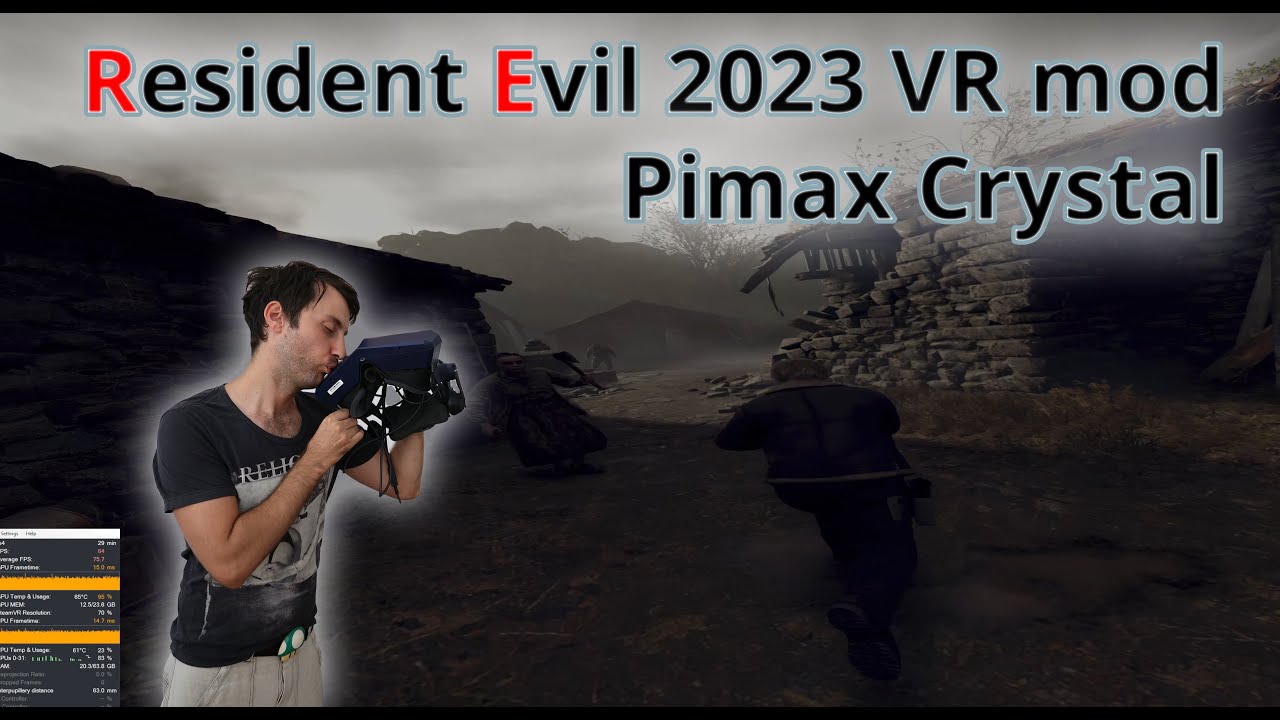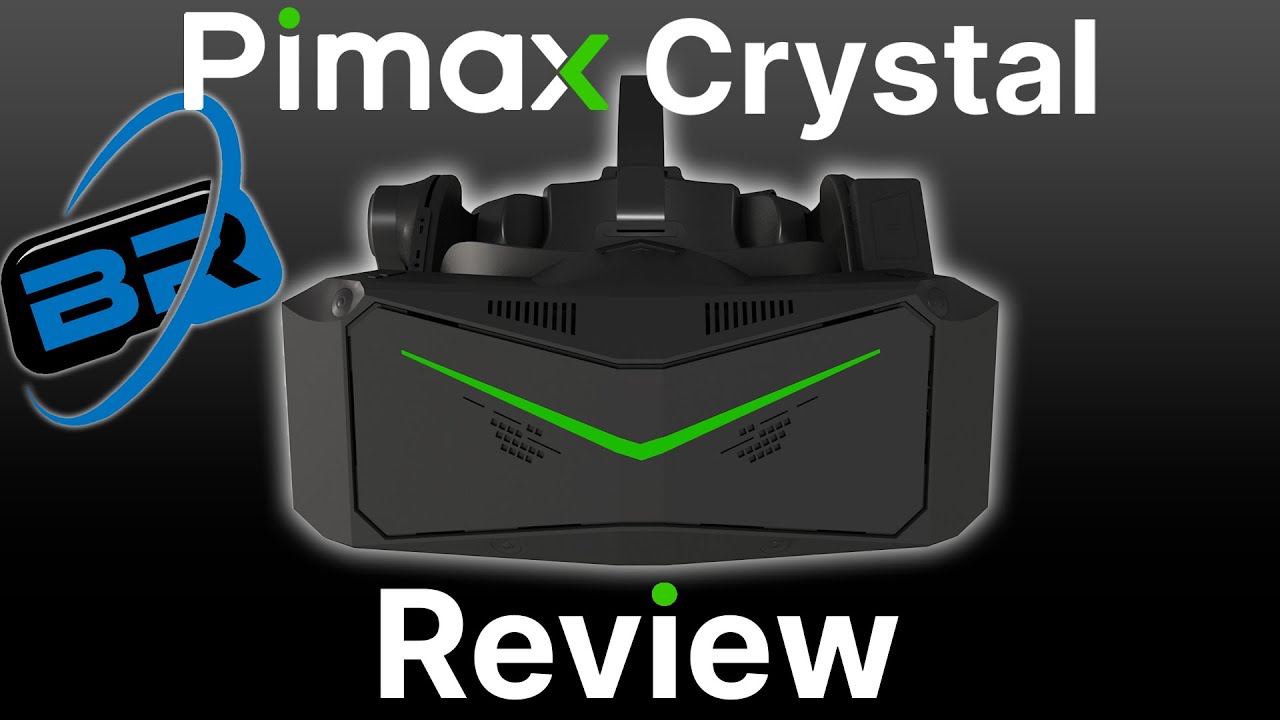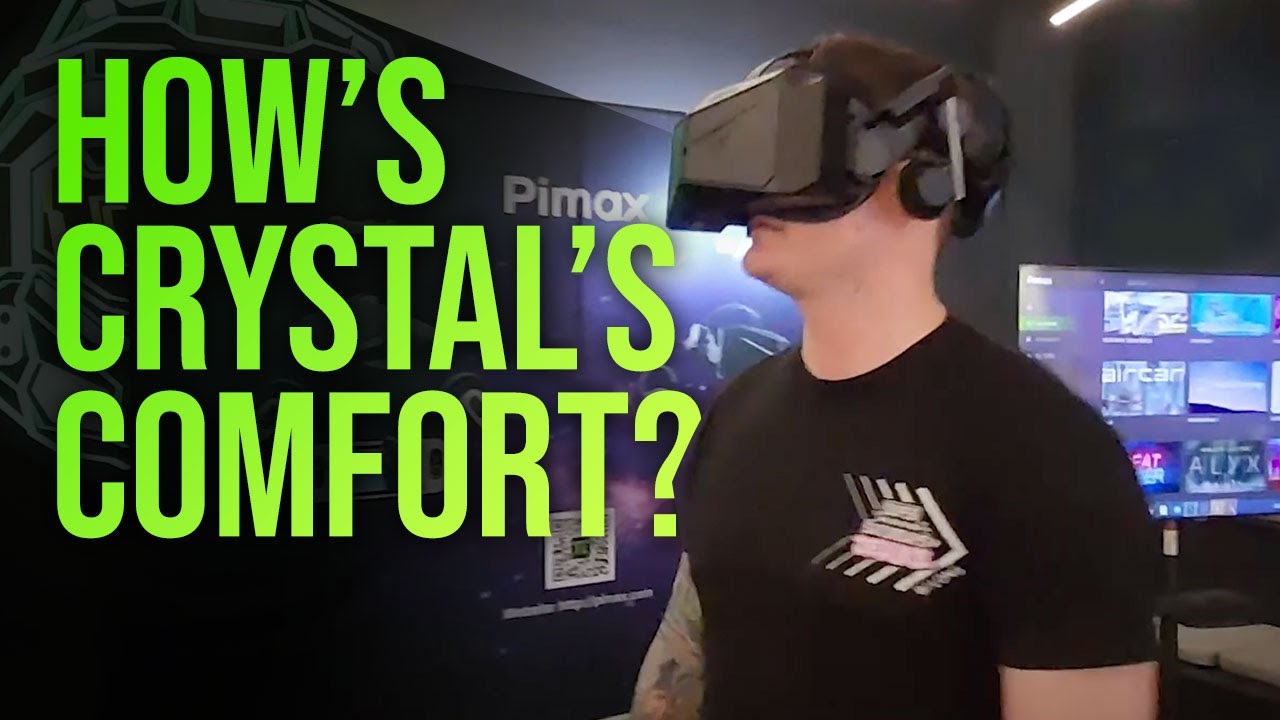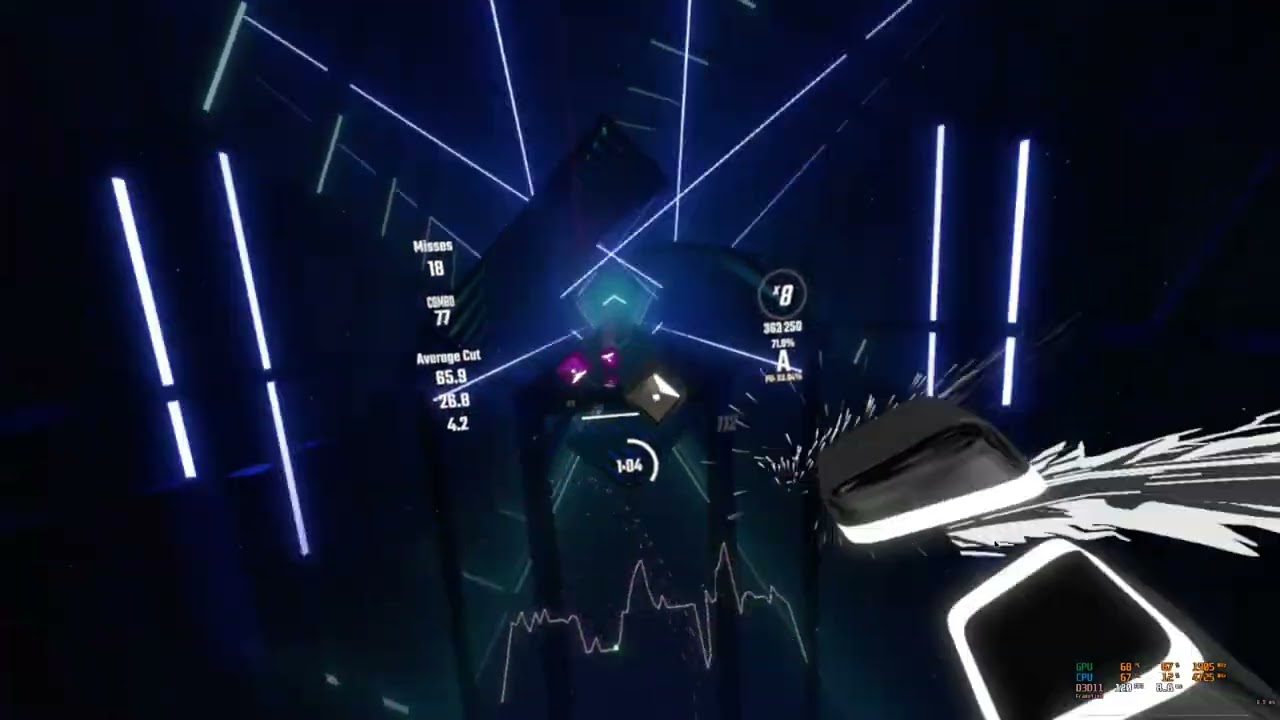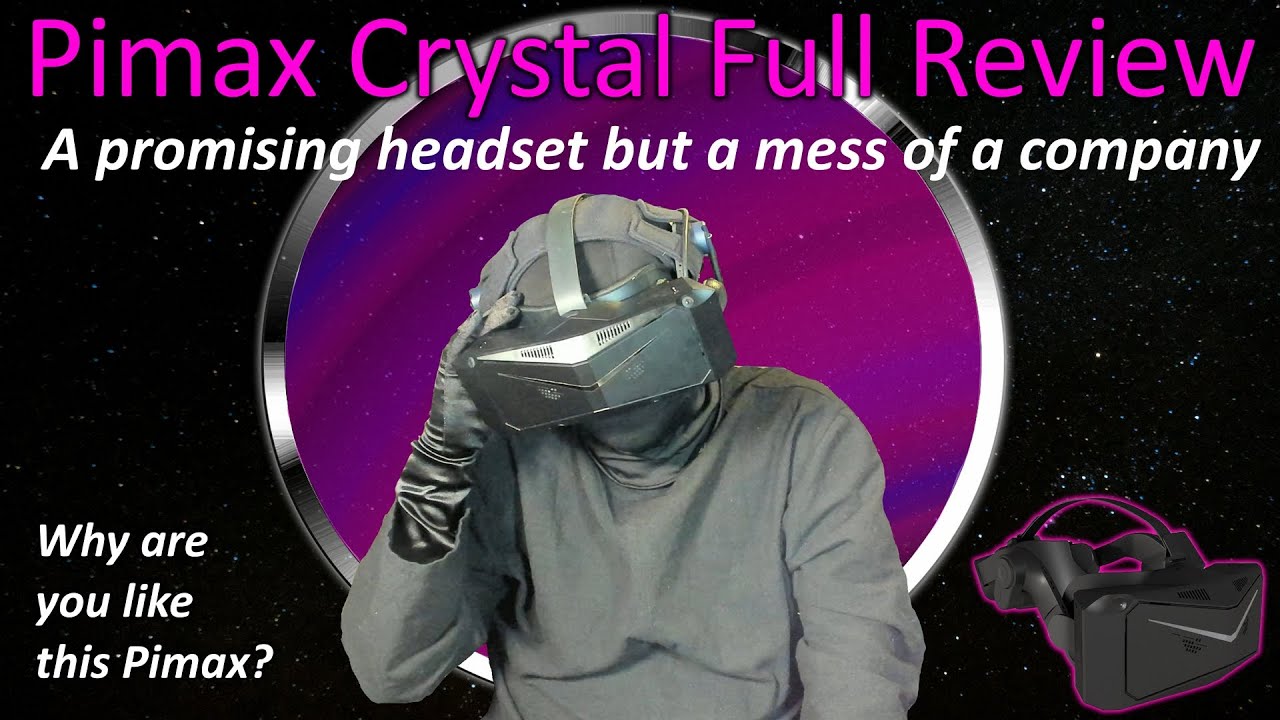1st Impressions
I’m the previous owner of an 8k plus, and the current owner of an 8kx (with hand-tracking module and KDMAS headphones), and a Meta Quest 2 (child’s)
System: 11900kf (OC to 5.2Ghz), 64Gb, 980Pro SSDs, RTX 4090
I pre-ordered on the 29th June to take advantage of the ‘free’ DMAS headphones. I received an invoice on the 1st July and paid within a couple of hours, and the order was logged on 2nd July. Verified shipping address on 5th July. I received the “choose your lenses” email on the 21st July, and selected the larger FOV option. Received FedEx tracking number on 27th July, and finally received the unit on 31st July.
Upon opening the box, everything that I’d expected to be there was there: including the GLASS 35ppd lenses, and the DMAS headphones, already fitted at factory.
I charged the two supplied batteries which were already mostly charged, and inserted one into the back of the headset.
I disconnected my 8kx from my PC, connected the Crystal’s USB3 directly to my PC motherboard (back plane), and the USB2 to one of my already existing powered USB2 hubs - thereby not using the supplied USB3 powered hub. The reason for this is that I had to downgrade a number of my USB3 hubs to USB2 last year as I ran out of end-points with all of the HOTAS equipment I had, and almost everything only really needs USB2 from a bandwidth perspective.
The Pimax Play software (v1.13.02.01) automatically found the Crystal once I turned it on, and the inside-out tracking registered as the base-station within a couple of seconds. I ran the “room setup” placing the headset on the floor, and stating “0cm” to calibrate, so once I picked up the headset it was at the correct height.
I dialed in the IPD to 65mm (as measured using a phone app) using the settings software within Pimax Play app.
The Crystal feels heavier than the 8kx, and I had to fiddle with the straps to get it to feel comfortable. The 8kx always used to fit very comfortably, but I’ve notice that the curvature of the 8kx’s face-plate to be smaller than that of the Crystal i.e. the Crystal’s faceplace (as seen from above) is flatter. This results in the headset feeling as though it doesn’t sit properly on your face, at least compared to the 8kx. That said, my son’s Quest 2 feels terrible compared to either of the Pimaxes, so this could be just down to personal preference.
The first thing I tried was DCS (in MT, OpenXR, PimaxXR), and my first two impressions were as follows:
The clarity of the picture is, i’d estimate, at least twice that of the 8kx, which was already very clear. I tended to run the 8kx at native resolution (90Hz refresh), and a DCS pixel density of 1.0, with FFR. On the Crystal I turned of FFR completely, and I was still getting 90FPS in menu. The big difference between the 8kx (Fresnel) and the Crystal (aspheric) is that I can now move my eyes around and still get the same clarity for around 90deg of my vision, whereas with the 8kx there was a central sweet spot, but most of the periphery was blurred due to the Fresnel lenses, so you’d tend to move your head to point the foveat region of your vision towards whatever you wanted to look at in detail.
The apparent FOV is much less than the 8kx. I knew this going in. The feeling on the 8kx was always that the majority of your vision field was filled with the virtual world, and you’d really have to strain your eyes to see the black borders. With the crystal, you feel like you’re wearing a motorbike helmet - significantly better than the Quest2 (or even a G2 i’ve tried), but not as immersive as the 8kx.
That said, when you’re actually in the cockpit, the clarity is astonishing. With the 8kx I always felt that the near-field was sharp, but that the horizon felt somewhat blurred, which was annoying within DCS during dog-fights as you’d feel like you were the last person to tally a bandit. The crystal is clear as a bell all the way out to the horizon - i’ve yet to see whether this translates into early or improved spotting, so time will tell. However, the clarity of the dials and instruments is second-to-none: you can see everything without moving your head. The apparent resolution really is very very close to human-eye resolution, being able to resolve the smallest of details on dials, MFDs and instruments.
So far, i’ve been on the same battery for around 4 hours, and there’s still around 60% of the charge left - so i’m not sure what is going on with other peoples’ reported issues with the batteries draining rapidly. I simply turn off the headset after use, hang it on the wall, and leave it plugged in to the PC.
Is the need for a rechargeable battery a bit silly? yes.. is it life-changingly devastating? not whatsoever.
I transferred my hand-tracking module from my 8kx over to the Crystal last night and it worked first time. However, the threaded holes on the bottom of the crystal appear to be a different spec to the ones on the bottom of the 8kx, so the screws that were supplied with the hand-tracking module do not work properly. I’ve raised a support ticket regarding this to ask what the correct thread spec is.
On another note, the DMAS headphones are great, but only if you have the “ear cups” that come with the KDMAS headphones. Luckily, I simply moved mine from the 8kx to the Crystal, and all of those beautiful base and mids returned. I’m not sure why they don’t sell the DMAS with the ear-cups as an option, as the DMAS alone sit too far away from your ear to be effective. Imagine holding your Bose headphones about 1" off your ear while in an aircraft.. not very useful.
However, on the whole I’m generally pleased with the investment. I’m looking forward to the eye-tracking firmware being released to the general public, as I think that’ll enable a significant boost in fps. That said, I’m averaging 60-85 fps in DCS as is without is. In MSFS2020 the crystal is achieving around 50-60fps, which is at least 50% more than I was getting with the 8kx.
The number of pixels in the Crystal may be less than the 8kx, but the clarity of the glass aspheric lenses more than compensates, to produce a clearer, better image. The only downside, is not some of the textures in MSFS2020 are starting to look a little low-res/fake - in the same way that 4k TVs made 1080HD shows look somehow fake/wrong.
I’m hoping that the eventual delivery of the larger FOV glass lenses will go some way towards relieving the feeling that i’ve taken a step backwards regarding FOV. However, when it comes to FOV, you’re truly spoilt in the 8kx, and I have to remember that the 8kx’s FOV is not part of the natural order of HMDs.
